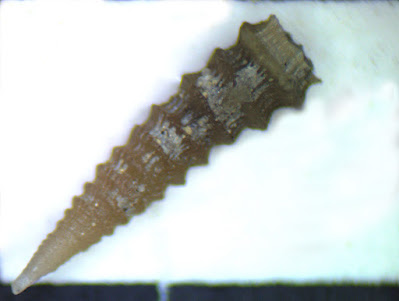This image shows a Halysites catenularia (Linnaeus, 1767) chain coral fossil. It dates to the Silurian Period and was found Kentucky USA. While I am guessing it was probably found at the Falls of the Ohio. It was displayed at Muséum National D'Historie Naturelle Jardin Des Plantes Paléontologie et Anatomie Comparée, Paris, France. Image taken August 2009.
The side view is has some green coloration maybe from moss from the Ohio River. It was from the Jules Marcou (1824-1898) collection. Marcou was born and educated in France and worked as a geologist for the Jardin des Plantes during the late 1840s. He traveled on expeditions in the United States during this time and in the early 1850s. So he could have acquired this fossil then. He later settled in Massachusetts USA, became a citizen and died there.





























